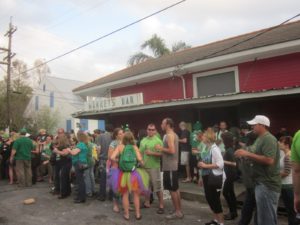Western Ireland is highly desired for its naturally beautiful landscapes. These scenes evoke the inclination to control the sublime, for controlling the sublime is to obtain power. As such, the English adopted considerable interest in Irish affairs. Through the means of colonization, they commodified the Irish landscape. Viewing the land as potential for new markets, the English plundered natural resources for the purposes of benefitting their industrial endeavors. Constructing an economic system based on property ownership and industrial activity undermined the organic relationship the Irish people had previously established with their homeland. In addition to commodifying the landscape, the English commodified the Irish populace itself. What they perceived to be a primitive body of people presented the perfect opportunity to claim more laborers.
In Killarney, a shift in control over commodification began in the 18th century. Local wealthy families virtually acted as tourism-development agencies. They shaped the town into organized settlements and established accessible roads and transportation options. This allowed for the eventual formation of an Irish-owned industry of tourism.
In both Killarney and Connemara, the aftermath of the Great Famine of 1852 served as a major turning point in the evolution of tourism. The Famine decimated the Irish population, resulting in a landscape uninhabited by many people. This contributed to a “picturesque” spectacle that drew tourists to the area. Regarding this as an economic opportunity, the Irish proceeded to commodify themselves. By choosing to develop the tourism industry, the Irish people reclaimed agency and escaped the depression partially caused by British influence.
The 19th and 20th centuries saw a revival in Celtic culture accompanied by a return of traditional Gaelic language, music, art, literature, sports, and stories. The Irish sold images of authenticity to consumers. By embracing expectations of Irish behavior, Ireland commodified the authentic and placed the power of the economy under Irish control.
Today, the presentation of Irish tourism is in a double bind as two different images are sold. The older notion of the empty, picturesque landscape still stands. Yet, the presence of people has been commodified as well. These two ideas conflict with one another, because people soil the “perfect” landscape. Making spaces accessible to people disrupts the sense of isolation and potential for adventure associated with empty land. This double bind is evident in different activities tourists can participate in when visiting Ireland.
Figure 1:
Traditional Irish attire enforces the festivity of the celebration.
Tourists take advantage of the natural landscape of Ireland by hiking.
In many advertisements, the Irish people are portrayed as “adventurous” and “welcoming.” They are depicted dining in upscale restaurants, engaging in athletic activities, and socializing in festive gatherings. This is clearly seen in Figure 1, in which Irish people are dressed in festive costumes, drinking at a pub, and reinforcing a celebratory atmosphere. Other advertisements utilize a more traditional representation of Ireland: rugged wilderness and desolate landscapes. Figure 2 shows people taking advantage of this type of scenery by hiking among rolling hills. Both of these presentations of the Irish populace fortify the idea that Irish identity lacks complexity. Believing it to be exceptionally simple, tourists traveling to Ireland think that they can immerse themselves within the local culture easily and without lasting consequences. This is deleterious to the perceived identity of the Irish people because it perpetuates superficial stereotypes. Nonetheless, as the industry attempts to cater to a wider range of consumers, both the Irish landscape and people continue to be commodified in the interest of benefitting tourism.


